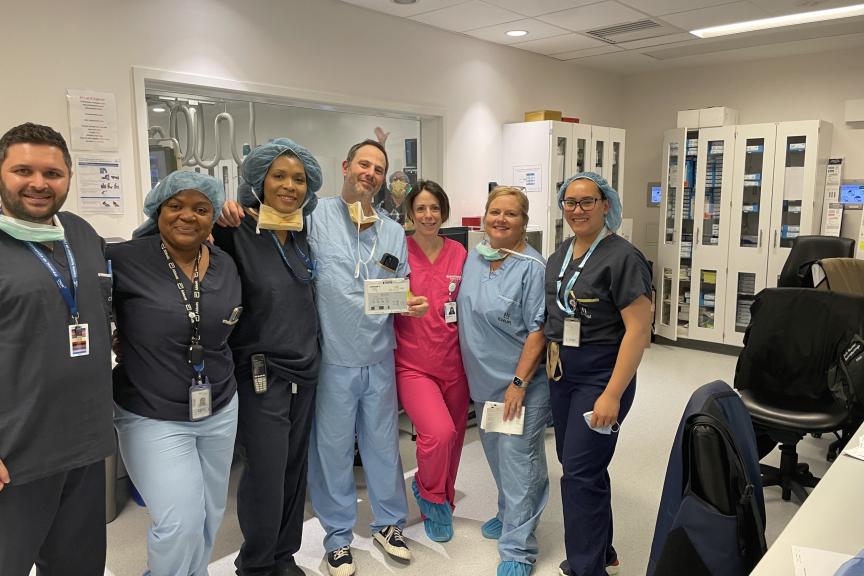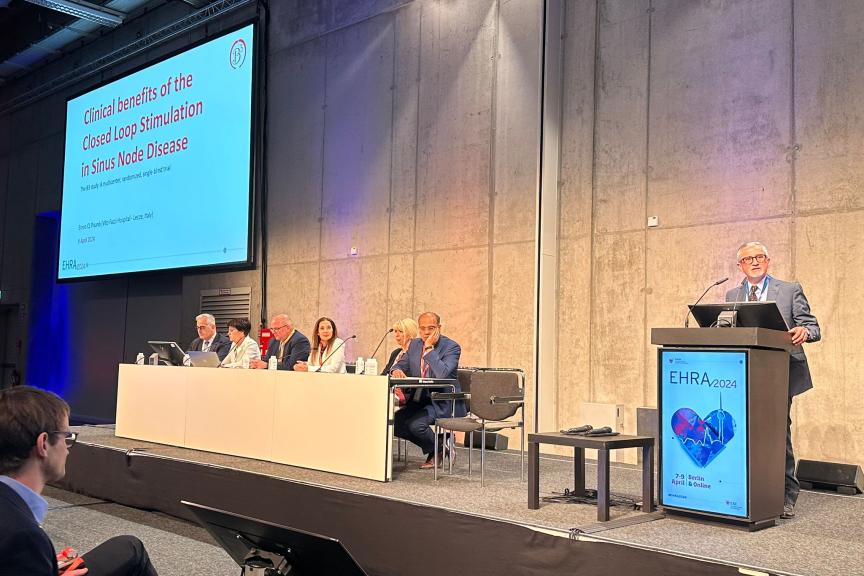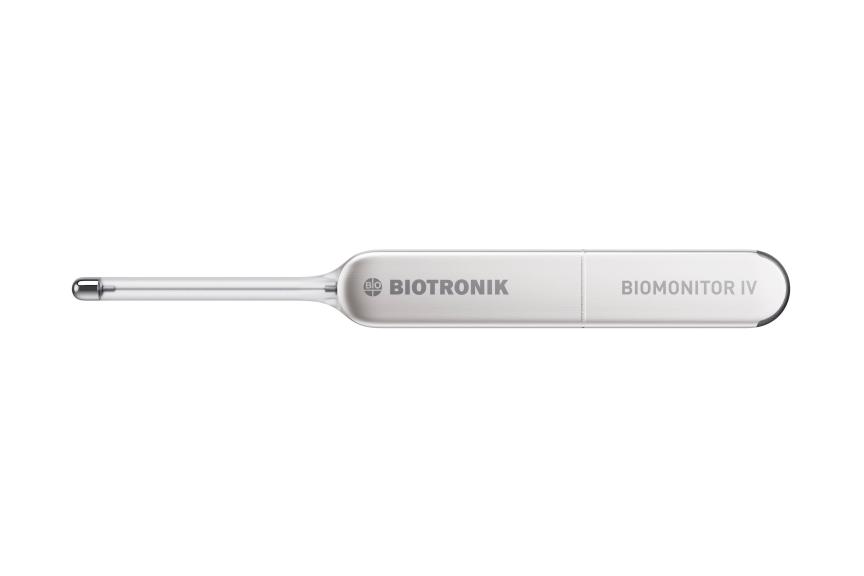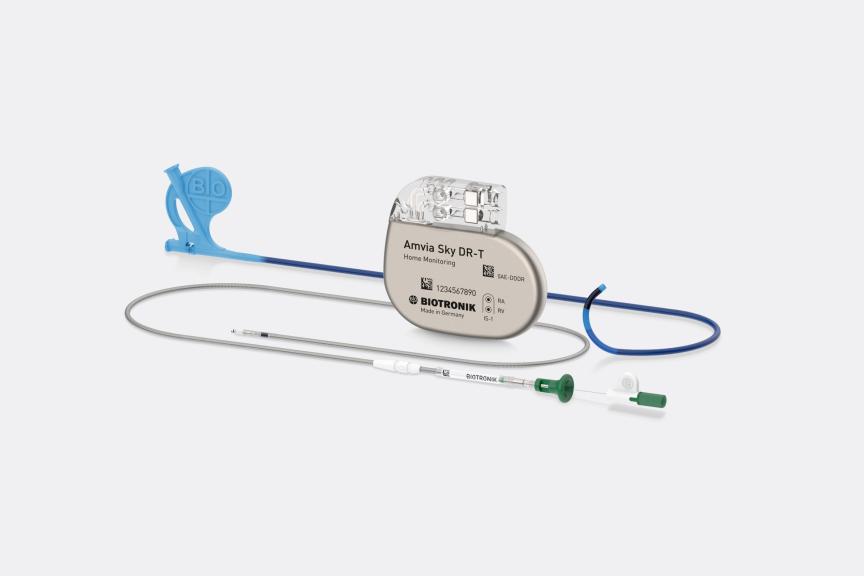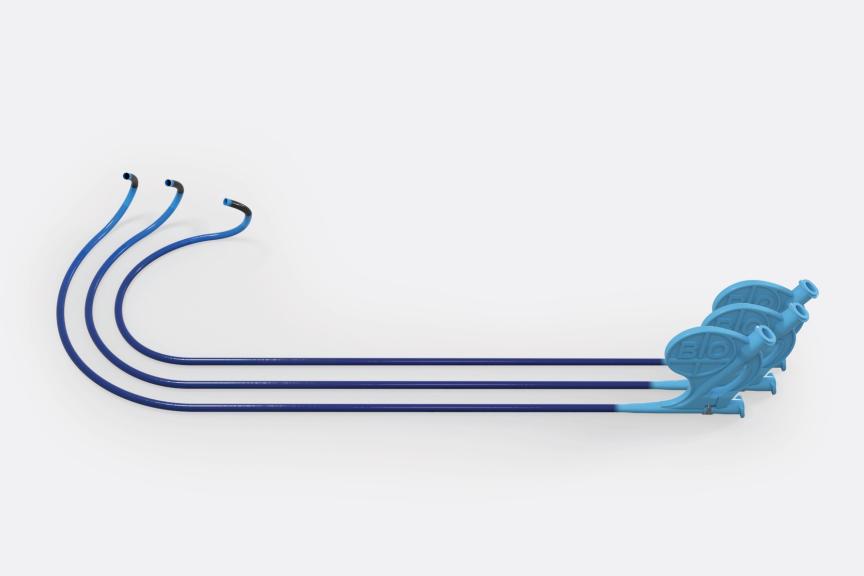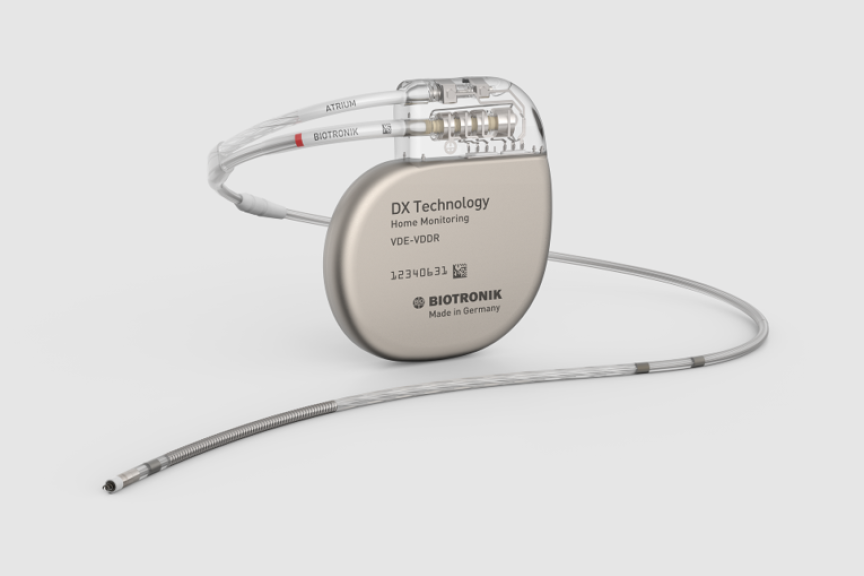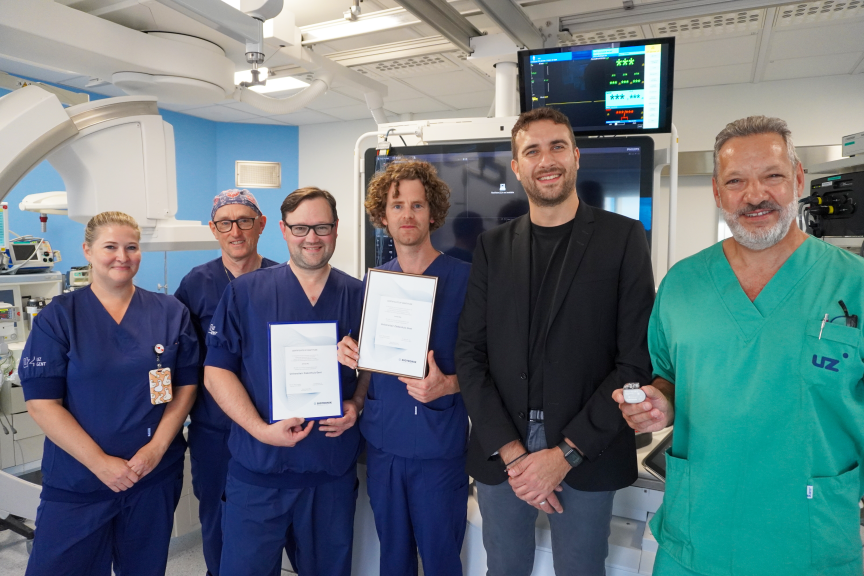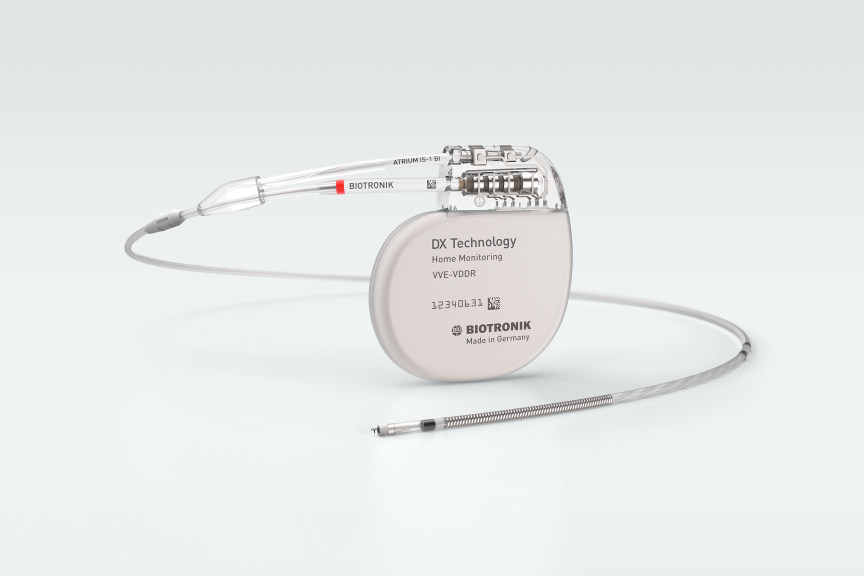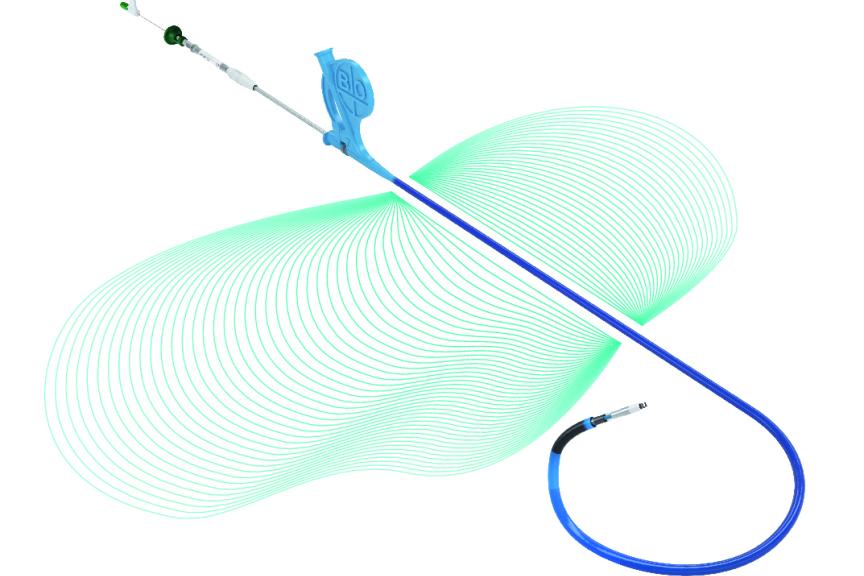BIOTRONIK Receives CE Approval for the World’s First Pacemaker and CRT-P Family Approved for Left Bundle Branch Pacing*
BIOTRONIK, a leading global medical technology company with 60 years of experience in developing trusted cardiovascular and endovascular solutions, announced today the latest addition to its cardiac rhythm management portfolio. "We are excited to have received CE mark for our newest technology – the world’s first pacemakers and CRT-Ps approved for left bundle branch pacing. Amvia Sky and Amvia Edge represent cutting-edge innovation and incorporate the latest cardiology trends," says Dr. Andreas Hecker, President CRM/EP at BIOTRONIK. In 1963, BIOTRONIK introduced the first German implantable pacemaker and is still driven today by this innovative spirit as it continues to advance the cardiovascular market.
Left bundle branch area pacing (LBBAP) is a relatively new, more physiologic approach in cardiac pacing. Previous studies pointed out that physiologic pacing could maintain or even improve cardiac function and improve long-term clinical outcomes compared to conventional right ventricular pacing.5,6,7 In a recent multi-center study, Prof. Dr. Jan De Pooter, Cardiology and Electrophysiology at the University Hospital Ghent claims that “LBBAP using BIOTRONIK conduction system tools is a safe and reliable treatment option. It is associated with high implant success, low pacing thresholds and high safety profile.”8 The Amvia family now ties in perfectly with these tools.
Alongside the broad range of choices for physiologic pacing, the Amvia family also offers new tools that automate and streamline many tasks during implantation, in-office follow-ups and remote monitoring. Furthermore, MRI Guard 24/7, the next-generation MRI access addition, provides an automatic MRI mode switch for easy examinations without pre- and post-scan programming appointments9,10 – for the benefit of both care teams and patients. Prof. Dr. Justin Mariani, Associate Professor, The Alfred Hospital Heart Centre, Melbourne, Australia, is leading the first in-human study of the Amvia system called BIO|CONCEPT Amvia. "The advantages of the Amvia family look very promising. The systems include several physiologic pacing and time-saving functions that will improve clinical workflows and patient care," says Prof. Mariani. Final results of the study are expected later this year.
BIOTRONIK's latest innovative family of pacemaker and CRT-P systems embodies the company's dedication to patient-centric technology for better patient care and workflow simplification to address healthcare provider needs. With 60 years of experience, BIOTRONIK continues its mission to perfectly match technology with the human body in order to deliver better patient outcomes.
-END-
References:
*1. BIOTRONIK Amvia Sky technical manual, Medtronic Azure XT DR MRI SureScan™ manual; Boston Scientific Accolade MRI™ technical manual; Abbott Assurity MRI™ user’s manual; MicroPort Alizea™ implant manual.
2 Watanabe E, Yamazaki F, Goto T, et al. Remote management of pacemaker patients with biennial in-clinic evaluation: continuous Home Monitoring in the Japanese At-Home study: A randomized clinical trial. Circ Arrhythm Electrophysiol. 2020 May;13(5):e007734. doi: 10.1161/CIRCEP.119.007734.
3. Mabo P, Victor F, Bazin P, et al. A randomized trial of long-term remote monitoring of pacemaker recipients (The COMPAS trial). Eur Heart J. 2012; 33(9): 1105-1111.
4. Garcia-Fernández FJ, Asensi JO, Romero R, et al. Safety and efficiency of a common and simplified protocol for pacemaker and defibrillator surveillance based on remote monitoring only: a long-term randomized trial (RM-ALONE). Eur Heart J. 2019; 40(23): 1837–1846.
5. Li Y, Yan L, Dai Y, et al. Feasibility and efficacy of left bundle branch area pacing in patients indicated for cardiac resynchronization therapy. Europace. 2020; 22(Suppl_2): ii54-ii60.
6. Li X, Zhang J, Qiu C, et al. Clinical Outcomes in Patients With Left Bundle Branch Area Pacing vs. Right Ventricular Pacing for Atrioventricular Block. Front Cardiovasc Med. 2021; 8:685253.
7. Liu Q, Yang J, Bolun Z, et al. Comparison of cardiac function between left bundle branch pacing and right ventricular outflow tract septal pacing in the short-term: A registered controlled clinical trial. Int J Cardiol. 2021; 322: 70-76.
8. De Pooter, Jan; Ozpak, Emine ; Calle, Simon ; Peytchev, Peter ; Heggermont, Ward; Marchandise, Sebastien; Provenier, Frank, Francois, Bert; Anne, Wim; Pollet, Peter, Barbaud, Cynthia, Gillis, Kris, Timermans, Frank; Van Heuverswyn, Frederic; Tung, Roderick, Wauters, Aurelien; lePolain de Warous, Jean-Benoit (2022): Initial experience of the left bundle branch area pacing using stylet-driven pacing leads: A multicentre study. In J. Cardiovasc Electrophysiol (7), pp.1540-1549. DOI:10.1111/jce.15558.
9. Data on file.
10. Mullane S, Michaelis K, Henrickson C, et al. Utilization and programming of an automatic MRI recognition feature for cardiac rhythm management devices. Heart Rhythm. O2. 2021; 2: 132–137.
Disclaimer:
Currently not approved in the United States. Content not intended for US healthcare providers.
About BIOTRONIK:
At BIOTRONIK, patient well-being is our top priority and has been for 60 years. BIOTRONIK is a leading global medical technology company with products and services that save and improve the lives of millions suffering from heart and blood vessel diseases as well as chronic pain. Driven by a purpose to perfectly match technology with the human body, we are dedicated innovators who develop trusted cardiovascular, endovascular and neuromodulation solutions. BIOTRONIK is headquartered in Berlin, Germany, and is represented in over 100 countries.


